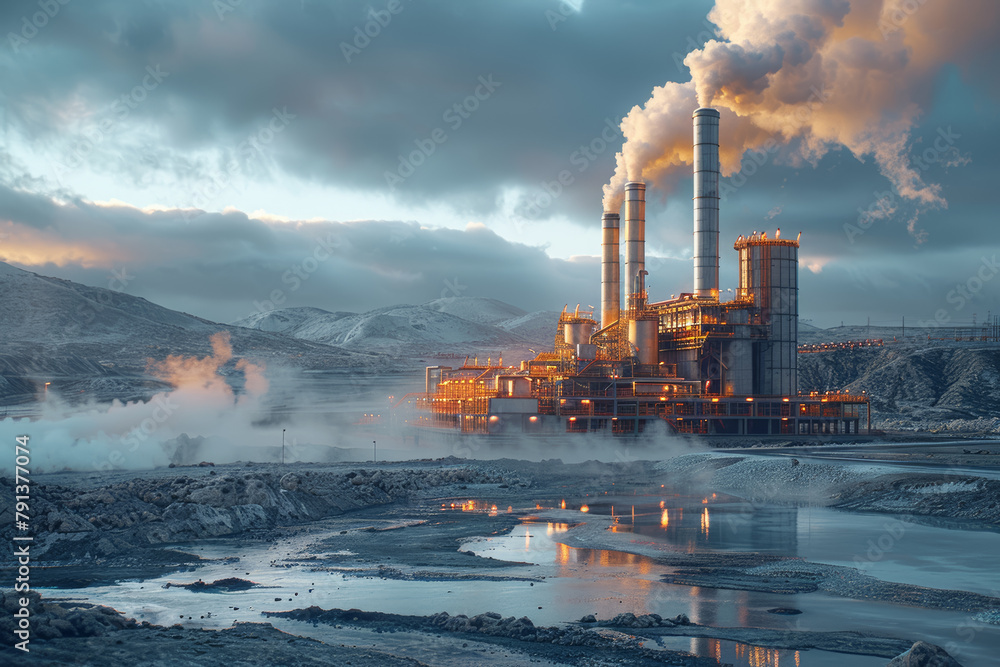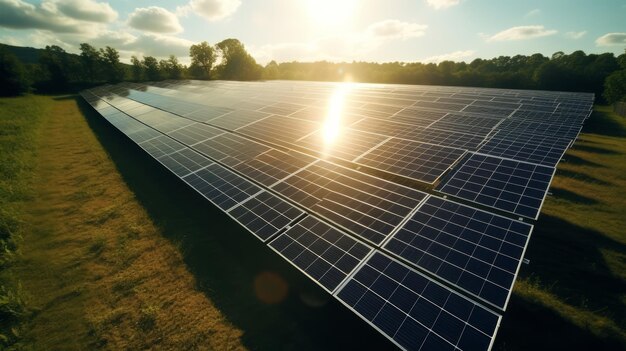
Geothermal Energy: Harnessing Earth’s Heat for Power – A Beginner’s Guide to Sustainable Power
Imagine a power source that runs 24/7, isn’t dependent on the sun shining or the wind blowing, and produces minimal emissions. Sounds like science fiction? It’s not! This incredible energy comes directly from beneath our feet: geothermal energy.
In this comprehensive guide, we’ll dive deep into the fascinating world of geothermal energy, exploring how we tap into Earth’s internal heat to power our homes, heat our buildings, and create a more sustainable future. Whether you’re new to renewable energy or just curious about what lies beneath, you’ll find everything you need to know right here.
What Exactly is Geothermal Energy? Understanding Earth’s Internal Oven
At its core, geothermal energy is quite simple: it’s heat from the Earth. The word "geothermal" comes from two Greek words: "geo" (Earth) and "therme" (heat). So, literally, it means "Earth heat."
But where does all this heat come from?
- Residual Heat from Formation: When Earth first formed billions of years ago, it was a molten ball. A significant amount of that original heat is still trapped deep inside.
- Radioactive Decay: Rocks within Earth’s mantle and crust contain naturally occurring radioactive elements (like uranium, thorium, and potassium). As these elements slowly decay, they release heat, constantly replenishing Earth’s internal warmth.
Think of our planet like a giant, incredibly slow-cooking oven. The deeper you go, the hotter it gets. This heat constantly flows outwards from the Earth’s core, through the mantle, and into the crust – the thin outer layer where we live.
Sometimes, this heat finds its way closer to the surface in areas with volcanic activity, hot springs, or geysers. These are the "hot spots" where geothermal energy is most easily accessible.
How Do We Harness Earth’s Heat? The Technology Explained Simply
To harness geothermal energy, engineers drill wells deep into the Earth’s crust to access reservoirs of hot water or steam. It’s a bit like drilling for oil or gas, but instead of fossil fuels, we’re looking for heat!
Once accessed, this hot fluid (or the heat it carries) is used in various ways:
1. Geothermal Power Plants: Generating Electricity
The primary way we use geothermal energy for large-scale power generation is through power plants. There are three main types, each designed to handle different temperatures and pressures of the geothermal fluid:
-
Dry Steam Power Plants:
- How it works: This is the oldest and simplest type. It uses geothermal reservoirs that produce primarily steam. The steam is piped directly from the underground wells to a turbine, which spins a generator to produce electricity. After passing through the turbine, the steam is condensed back into water and injected back into the Earth.
- Best for: Very hot, high-pressure steam resources.
- Example: Larderello, Italy, home to the world’s first geothermal power plant (operational since 1913!).
-
Flash Steam Power Plants:
- How it works: These are the most common type of geothermal power plants. They use hot water (above 360°F or 182°C) from the reservoir. As this superheated water is brought to the surface, the pressure drops, causing some of the water to "flash" (or rapidly boil) into steam. This steam then drives a turbine, and the remaining hot water is reinjected.
- Best for: Hot water-dominated reservoirs.
- Example: The Geysers in California, USA – the largest geothermal complex in the world.
-
Binary Cycle Power Plants:
- How it works: These plants are revolutionary because they can use geothermal water at lower temperatures (as low as 225°F or 107°C) than flash or dry steam plants. Instead of using the geothermal fluid directly, it’s passed through a heat exchanger. Here, its heat is transferred to a secondary working fluid (like isobutane or pentane) which has a much lower boiling point than water. This secondary fluid then vaporizes, and its vapor drives a turbine. The geothermal water never comes into direct contact with the turbine or the atmosphere, making it a "closed-loop" system.
- Best for: Lower-temperature geothermal resources, which are more common globally.
- Benefit: Zero emissions during operation, as no geothermal fluid or gases are released into the atmosphere.
2. Direct Use Geothermal: Heating and More
Beyond electricity generation, geothermal energy can be used directly for heating purposes, often without the need for complex power plants. This is one of the most efficient ways to use geothermal energy.
- Space Heating: Hot geothermal water can be piped directly into buildings, homes, and even entire district heating systems (like those famously used in Reykjavik, Iceland) to provide warmth.
- Greenhouses and Agriculture: Geothermal heat helps maintain optimal temperatures for growing crops year-round, extending growing seasons and improving yields.
- Aquaculture: Fish farms can use geothermal water to warm tanks, promoting faster growth for fish and shellfish.
- Industrial Processes: Some industries use geothermal heat for drying timber, pasteurizing milk, or other industrial applications requiring heat.
- Spas and Resorts: The most common and oldest direct use, hot springs have been used for bathing and relaxation for thousands of years.
3. Geothermal Heat Pumps (GHPs): Heating and Cooling Homes
Geothermal heat pumps are a brilliant application of geothermal energy for individual homes and businesses. Unlike geothermal power plants or direct-use systems that tap into deep, high-temperature resources, GHPs use the relatively constant temperature of the Earth near the surface (just a few feet down).
- How it works: The Earth at depths of 6-10 feet (1.8-3 meters) maintains a stable temperature, typically between 45-75°F (7-24°C), depending on the region.
- In Winter (Heating): A GHP system circulates a fluid through a loop of pipes buried underground. This fluid absorbs heat from the warmer Earth and carries it back to the house. A heat pump then concentrates this heat and distributes it indoors.
- In Summer (Cooling): The process is reversed. The GHP system extracts heat from the house and transfers it to the cooler Earth, effectively cooling the indoor space.
- Benefits: Highly energy-efficient (can reduce heating/cooling costs by 25-50%), environmentally friendly, and provide both heating and cooling from a single system.
The Amazing Benefits of Geothermal Energy: Why It’s a Game Changer
Geothermal energy offers a compelling array of advantages that make it a crucial player in the global shift towards sustainable energy:
- Renewable and Sustainable: As long as the Earth exists and its core is hot, geothermal energy will be available. The heat is constantly replenished by radioactive decay.
- Clean and Environmentally Friendly:
- Low Emissions: Geothermal power plants produce significantly lower greenhouse gas emissions compared to fossil fuel plants. Binary cycle plants produce virtually no emissions.
- Minimal Air Pollutants: Unlike burning fossil fuels, geothermal plants don’t release harmful particulate matter, nitrogen oxides, or sulfur dioxide.
- Reliable and Baseload Power: This is a huge advantage! Geothermal plants can operate 24 hours a day, 7 days a week, regardless of weather conditions. This makes them a "baseload" power source, meaning they can consistently meet a minimum level of demand, providing stable grid power unlike intermittent sources like solar or wind.
- Small Land Footprint: Compared to other large-scale power plants or solar farms, geothermal plants require relatively little land per megawatt of electricity produced.
- Economic Benefits: Geothermal projects create local jobs in drilling, construction, operation, and maintenance. They can also provide stable, long-term energy prices, reducing reliance on volatile fossil fuel markets.
- Versatile Uses: As we’ve seen, it’s not just for electricity. Direct use for heating, cooling, and agriculture adds to its value.
Challenges and Considerations: The Road Ahead
While geothermal energy is incredibly promising, it’s not without its challenges:
- Location-Specific: High-temperature geothermal resources suitable for large-scale power generation are typically found in geologically active areas (e.g., along plate boundaries, near volcanoes). This limits where plants can be built. However, lower-temperature resources for binary plants and heat pumps are far more widespread.
- High Upfront Costs: Drilling deep wells and constructing power plants requires significant initial investment. This can be a barrier for new projects, though operational costs are typically very low.
- Resource Depletion (if not managed): While renewable, a specific geothermal reservoir can be "over-tapped" if hot water is extracted faster than it can be naturally replenished. Proper reservoir management and reinjection strategies are crucial to ensure sustainability.
- Potential Environmental Concerns:
- Water Use: Flash steam plants use some water for cooling, though binary plants are closed-loop. Reinjection of fluids is vital to prevent subsidence and maintain reservoir pressure.
- Induced Seismicity: In rare cases, injecting or extracting fluids can cause minor seismic activity (small earthquakes), though this is usually imperceptible and carefully monitored.
- Minor Gas Emissions: Some geothermal fluids contain dissolved gases like hydrogen sulfide (H2S), which smells like rotten eggs. Modern plants use technologies to capture and convert these gases, minimizing their release.
The Global Landscape and Future of Geothermal Energy
Geothermal energy is already a significant power source in several countries.
- Iceland: A global leader, Iceland uses geothermal energy for almost all of its electricity and heating needs, thanks to its unique volcanic geology.
- United States: The U.S. is the world’s largest producer of geothermal electricity, primarily from the Geysers complex in California.
- Indonesia and Philippines: These nations have vast geothermal potential due to their location on the "Ring of Fire" and are rapidly expanding their geothermal capacity.
- New Zealand, Italy, Kenya, Turkey: Other countries with significant geothermal operations.
The future of geothermal energy is bright, especially with advancements in technology:
- Enhanced Geothermal Systems (EGS): This cutting-edge technology aims to unlock geothermal resources in areas that don’t naturally have permeable rock or sufficient water. EGS involves injecting water into hot, dry rock formations to create artificial reservoirs, effectively expanding the geographic reach of geothermal energy.
- Co-production with Oil & Gas: Exploring the possibility of using hot water extracted during oil and gas operations to generate electricity.
- Improved Drilling Techniques: Making drilling more efficient, less costly, and able to reach deeper resources.
Conclusion: Earth’s Unsung Powerhouse
Geothermal energy is a powerful, reliable, and often underestimated renewable energy source. By tapping into the immense heat within our planet, we can generate clean electricity, efficiently heat and cool our homes, and support various industries.
While challenges like location specificity and upfront costs exist, ongoing technological advancements, particularly in areas like Enhanced Geothermal Systems, are steadily expanding its potential. As the world strives for a cleaner, more sustainable energy future, harnessing Earth’s internal warmth will undoubtedly play an increasingly vital role, proving that sometimes, the best solutions are right beneath our feet.
Frequently Asked Questions (FAQs) About Geothermal Energy
Q1: Is geothermal energy truly renewable?
A: Yes, it is considered a renewable energy source. While specific reservoirs can be depleted if over-extracted, the Earth’s internal heat is constantly replenished by radioactive decay and residual heat from the planet’s formation, ensuring a continuous supply. Proper reservoir management is key to its long-term sustainability.
Q2: Is geothermal energy expensive?
A: The upfront costs for drilling and plant construction can be significant. However, once operational, geothermal power plants have very low running costs because the "fuel" (Earth’s heat) is free. This leads to stable, predictable energy prices over the long term, often making it competitive with other energy sources.
Q3: Can geothermal energy cause earthquakes?
A: In rare instances, particularly with Enhanced Geothermal Systems (EGS) where water is injected into rock, minor seismic activity (small, often imperceptible tremors) can occur. However, these are generally very small and carefully monitored, posing little to no risk to people or structures. Natural seismic activity in geothermal regions is typically far more significant.
Q4: How does geothermal energy compare to solar and wind energy?
A: All three are excellent renewable sources, but they have key differences:
- Geothermal: Provides "baseload" power (24/7, constant supply), not dependent on weather, small land footprint. Location-specific for high-temperature resources.
- Solar: Intermittent (only when the sun shines), requires more land for large-scale operations, but widely available.
- Wind: Intermittent (only when the wind blows), requires large land areas for wind farms, but becoming very cost-effective.
Geothermal often complements solar and wind by providing stable power when other renewables aren’t generating.
Q5: Can I use geothermal energy in my home?
A: Absolutely! Geothermal heat pumps (GHPs) are an increasingly popular way to heat and cool individual homes and businesses. They use the stable temperature of the Earth near the surface and are highly energy-efficient, offering significant savings on utility bills. While direct use for heating might be limited to areas with accessible hot springs, GHPs can be installed almost anywhere.



Post Comment